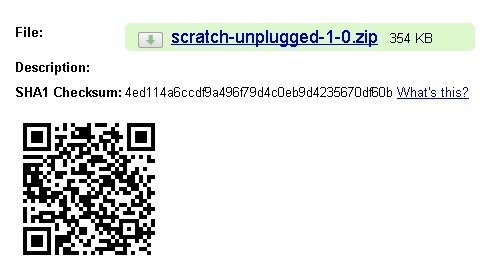Many methods have been created to detect errors. The one chosen to
be used depends on the data being sent (or stored) and the nature of the
channel, and its error proneness, being used. Listed below are some
well-known methods. Refer to the appropriate Wikipedia page for further
information.
Repetition codesThis where the data bits being sent are split into groups and these
groups are sent repeatedly. Errors can generally be detected For
example, sending the letter A, ASCII binary pattern
1000001, three times would result in a transmission of
1000001 1000001 1000001. A corruption in one of these patterns to say
1100001 could be detected by comparing this to the other two. This
method is simple, but takes more bandwidth (because there is three times
the data) and can not discover all types of errors e.g. the same
error occurring in the same place in all three groups.
Parity Bits A parity bit is a 1 or 0 added to the end of a sequence of bits
when it is sent (see the graphic above). The whole bit pattern can be
examined at the receiving end to see if an error has occurred. There are
two parity schemes: even and odd parity. Even parity counts up the
number of ones present and adds a 1 to the (right-hand) end if the
number is odd. This makes the total number of ones even. Odd
parity counts up the number of ones present and adds a 1 to the end if
the number is even. This makes the total number of ones odd.
For example, using even parity and the capital A, bit pattern 1000001:
Total ones = 2, add a 0 because 2 + 0 = 2 = an even number.
Therefore transmit 10000010
Using odd parity and the capital A, bit pattern 1000001:
Total ones = 2, add a 1 because 2 + 1 = 3 = an odd number.
Therefore transmit 10000011
The even parity bit scheme can detect odd numbers of errors i.e. 1, 3, 5, but not even numbers. For example, say the letter A was transmitted using even parity as the sequence 10000010 and received as 11000011. There are two errors, one being the parity bit. Using the parity method we add up the number of ones and get 4. This is even and as we are using even parity we conclude that no error has occurred. Parity bit error control systems are used on multi-disk file servers in the form of a RAID
(Redundant Array of Inexpensive Disks) system. There are several
versions of RAID, but the overall idea is to spread data (or the bit
values that make up the data), including parity bits, across multiple
disks so that if one disk fails it can be replaced and the failed disk's
data can be rebuilt from the remaining data and the parity bit values.
For more information click on this link: Fujitsu RAID systems
This link points to an activity that shows how parity bits work - Error detection
Note: Modern RAM chips generally do not have parity checking built in. However some use another sort of error detection and correction called ECC. This is short for Error Correction Code. Read this page for more information: Tech Term - ECC. Check digitsFrom the Wikipedia page on check digits: A check digit "consists of a single digit computed from the other digits in the message. With
a check digit, one can detect simple errors in the input of a series of
digits, such as a single mistyped digit or some permutations of two
successive digits."
Also, "The two most common errors in handling an ISBN (e.g., typing or writing it) are an altered digit or the transposition (swapping) of adjacent digits. The ISBN check digit method ensures that these two errors will always be detected. However, if the error occurs in the publishing house and goes undetected, the book will be issued with an invalid ISBN." Check digits are combined to catch human errors made when entering
numbers. For example swapping numbers: 123 -> 213. Well known check
digit systems are UPC (Universal Product Code) and ISBN (International Standard Book Number, versions 10 and 13). ISBN-10
uses 10 digits (including the check digit). ISBN-13 use 13 digits. It
superseded ISBN-10 in 2007. Below is how to calculate the check digit
using the ISBN-13 system:
Note: steps 1 and 2 can be done in one go by multiplying by 1 and then 3 repeatedly, like below. The ISBN-13 check digit of 978-0-306-40615-? is calculated as follows:s = 9×1 + 7×3 + 8×1 + 0×3 + 3×1 + 0×3 + 6×1 + 4×3 + 0×1 + 6×3 + 1×1 + 5×3 = 9 + 21 + 8 + 0 + 3 + 0 + 6 + 12 + 0 + 18 + 1 + 15 = 9393 / 10 = 9 remainder 310 – 3 = 7Thus, the check digit is 7, and the complete sequence is ISBN 978-0-306-40615-7.From the Wikipedia page on ISBN-13.
|
